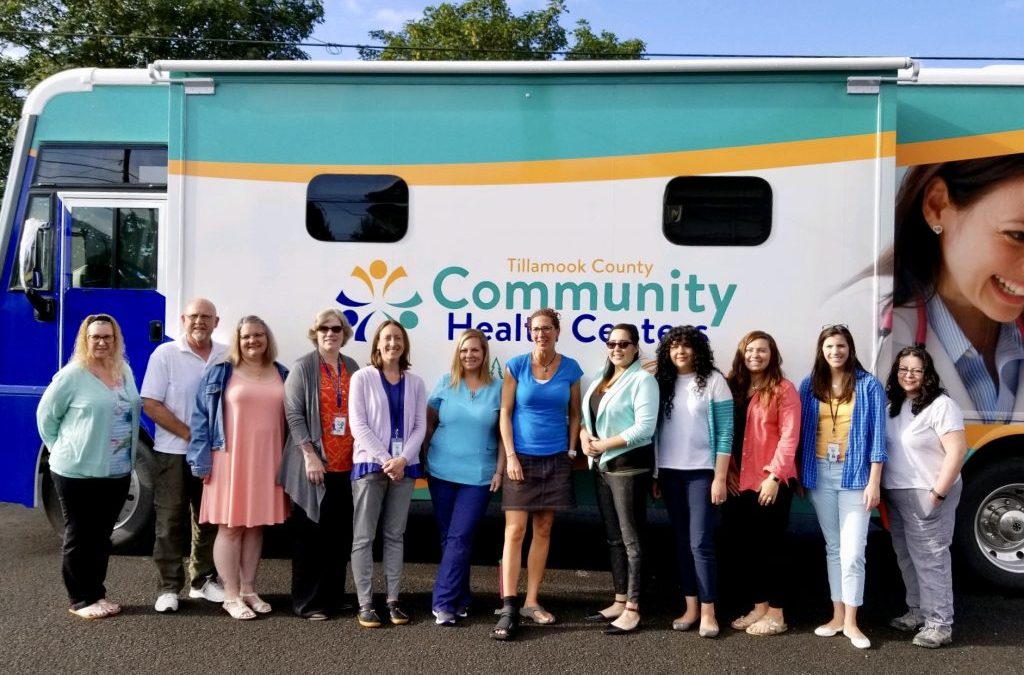
by Guest | Jul 31, 2019 | Being Well
By Tara Stevens, Health Program Manager, TCCHC
August 4-7th marks National Health Center Week 2019. Tillamook County Community Health Centers (TCCHC)  joins the more than 10,00 locally run community health centers across the nation in celebrating this week to raise awareness about the missions, accomplishments and ways health centers are providing affordable health care.
joins the more than 10,00 locally run community health centers across the nation in celebrating this week to raise awareness about the missions, accomplishments and ways health centers are providing affordable health care.
Community Health centers (also called Federally Qualified Health Centers or FQHC’s) are independent, non-profit, non-governmental health care organizations that are defined by 4 key components:
- Open to everyone, regardless of insurance status or ability to pay and charge for services on a sliding fee scale
- Provide high quality, culturally competent and comprehensive services
- Located in medically underserved areas
- Operate under the direction of a patient-majority governing board
This year’s theme of “Rooted in Community” highlights how health centers are at the forefront of a nationwide shift in addressing environmental and social factors as an integral part of primary care, reaching beyond the walls of conventional medicine to address the factors that may cause sickness, such as lack of nutrition, mental illness, homelessness and substance use disorders. Community Health Centers’ success in managing chronic disease in medically vulnerable communities has helped reduce health care costs for American taxpayers. A few highlights of health center accomplishments include:
- Serve as the health care home for more than 28 million patients in over 11,000 communities across the country;
- Reduce health care costs and produce savings – on average, health centers save 24% per Medicaid patient when compared to other providers;
- Integrate critical medical and social services such as oral health, mental health, substance abuse, case management, and translation under one roof;
- Employ over 220,000 people and generate at least $54.6 billion in total economic activity in some of the nation’s most distressed communities;
- Provide care to 1.4 million homeless patients and more than 350,000 veterans.
TCCHC provides primary health care services to community members of all ages in multiple locations throughout the county. They also offer preventative care services, such as immunizations and disease screenings, dental care from local providers at an affordable cost, and offer expanded care through their in-house registered dietitian and behavioral health providers. TCCHC also provides public health services that include the supplemental nutrition program for Women, Infants, and Children (WIC), home visits, tobacco prevention and education, and restaurant, food and water inspections.
from local providers at an affordable cost, and offer expanded care through their in-house registered dietitian and behavioral health providers. TCCHC also provides public health services that include the supplemental nutrition program for Women, Infants, and Children (WIC), home visits, tobacco prevention and education, and restaurant, food and water inspections.
 TCCHC is proud to announce the arrival of the new mobile community health center. This mobile clinic will provide expanded access for community members to dental, physical and behavioral health care. Please join us in welcoming our newest team member and celebrating National Health Center Week at the Ribbon cutting ceremony on Wednesday, August 7th, from 2 p.m. to 4 p.m. at Tillamook Bay Community College, 4301 Third Street, Tillamook.
TCCHC is proud to announce the arrival of the new mobile community health center. This mobile clinic will provide expanded access for community members to dental, physical and behavioral health care. Please join us in welcoming our newest team member and celebrating National Health Center Week at the Ribbon cutting ceremony on Wednesday, August 7th, from 2 p.m. to 4 p.m. at Tillamook Bay Community College, 4301 Third Street, Tillamook.
For more information about national health center week, visit healthcenterweek.org. For more information about TCCHC services, visit tillamookchc.org or call 503-842-3900.
TCCHC is the backbone agency for the Tillamook County Wellness coalition. For more local health and wellness information, visit tillamookcountyhealthmatters.org or follow Tillamook County Wellness on Facebook, Instagram and Twitter.
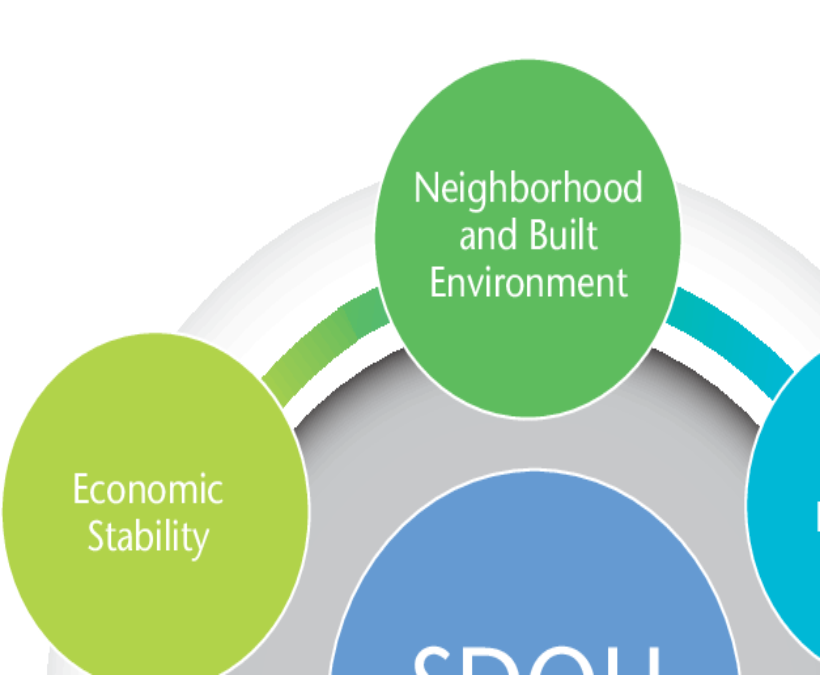
by Michelle | Jul 17, 2019 | Being Well
 Tillamook County Community Health Centers, our local public health authority and backbone for Tillamook County Wellness, has been awarded a Sustainable Relationships for Community Health (SRCH) grant from the Oregon Health Authority (OHA). The one-year grant will provide added staff capacity and technical assistance to address chronic disease prevention and management in Tillamook County. Funds from the grant will be used to hire a coordinator who will manage the project in conjunction with the Tillamook County Wellness Health Screening committee.
Tillamook County Community Health Centers, our local public health authority and backbone for Tillamook County Wellness, has been awarded a Sustainable Relationships for Community Health (SRCH) grant from the Oregon Health Authority (OHA). The one-year grant will provide added staff capacity and technical assistance to address chronic disease prevention and management in Tillamook County. Funds from the grant will be used to hire a coordinator who will manage the project in conjunction with the Tillamook County Wellness Health Screening committee.
The OHA SRCH initiative is very aligned to the mission of Tillamook County Wellness, a collective of community partner organizations working together to reduce chronic disease rates, especially type 2 diabetes, by addressing the Social Determinants of Health.  SRCH funds are intended to foster collaboration, reduce health disparities and healthcare costs and improve population health outcomes. This includes optimization of community and clinic-based health screenings, program referrals and reimbursement pathways.
SRCH funds are intended to foster collaboration, reduce health disparities and healthcare costs and improve population health outcomes. This includes optimization of community and clinic-based health screenings, program referrals and reimbursement pathways.
Local healthcare partners, including the Tillamook County Community Health Centers (TCCHC), Adventist Health – Tillamook, Columbia Pacific CCO and Rinehart Clinic each play a key role in the Tillamook County Wellness Health Screening committee, with representatives from each organization serving on a core leadership team charged with fulfilling the grant requirements. Additionally, several community-based organizations such as the YMCA, NCRD, OSU Extension and Northwest Senior & Disability Services, among others, will participate in the project.
Together, committee members will:
- Assess existing health screening practices in clinical as well as community-based settings, including workplaces.
- Identify current chronic disease prevention and self-management programs and services to which people are being referred.
- Co-design recommendations for ways to modify or enhance screening and referral practices.
- Generate agreements for implementing improvements to systems processes and program access.
- Track and analyze screening, referral and program participation data to determine impact on health outcomes and identify areas for improvement.
- Develop recommendations for supporting programs and processes that are most effective for reducing chronic disease rates and improving individual health.
“With 90% of all healthcare costs being spent on the treatment of chronic and mental health conditions, it is imperative that we connect people with the resources they need to get and stay healthy,” states Marlene Putman, Tillamook County Public Health Administrator and Tillamook Community Health Centers Director. “There are so many great programs already in place here – the Diabetes Prevention Program, CHIP, cooking classes and fitness programs through the YMCA, NCRD and OSU Extension. We know these programs work. We have data that shows how people who take advantage of these programs improve their health. We just need to be more intentional about how we connect people, programs and processes so that everyone wins.” Putman adds that increasing access to programs by reducing cost and transportation barriers are among the strategies being explored. One of the goals of the project is to better understand the factors that lead to increased program participation and adherence, as well as where people are experiencing barriers. These considerations can then be built into the design of community and clinic-based support networks to optimize system workflows, program delivery and population health outcomes.
To learn more, visit at tillamookcountyhealthmatters.org or follow Tillamook County Wellness on Facebook, Instagram and Twitter.
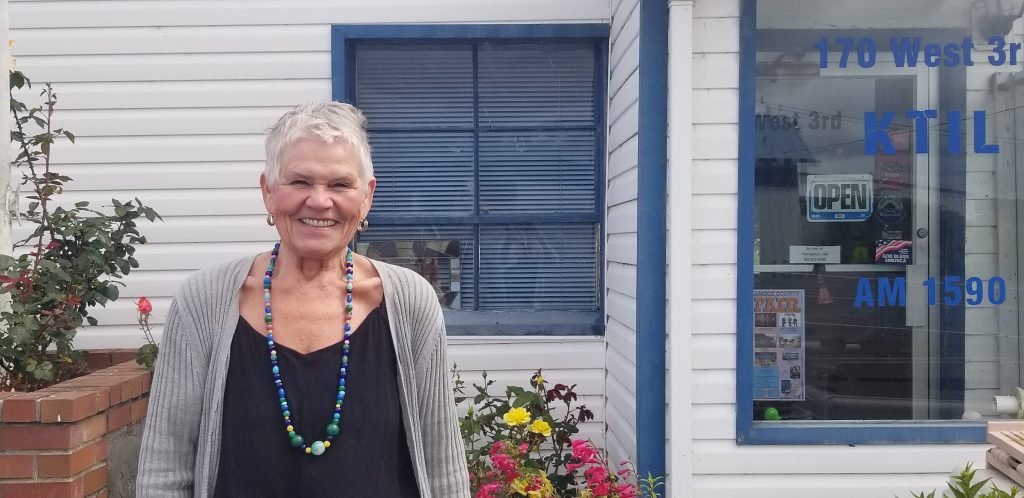
by Guest | Jul 11, 2019 | Being Well
By Laura Swanson, Tillamook County Pioneer
“It’s different for us all,” began Shaena Peterson about her transformation, “and it’s a process to figure out what will work for you. It doesn’t happen overnight.”

Shaena interviewing Ginny Gabel, Community Health Educator, Adventist Health – Tillamook
Shaena’s journey started around the Christmas holiday in 2012. Her hip was out and she weighed 300 pounds. Yes, really. “I knew that I had to do something, so I talked with Ginny Gabel, the community health educator at Adventist Health and, in April 2013, I attended their CHIP classes.” Through her participation in the hospital’s Complete Health Improvement Program (CHIP) classes, Peterson lost some weight and saw her cholesterol numbers significantly reduced. “I started to realize that changing my lifestyle habits made a big difference,” she said. “It wasn’t hard to do, just eating healthier and walking more. I was learning about my body.” Other changes included quitting tobacco and a new awareness about food.
In 2014, Peterson continued her journey, trying a reduced calorie meal plan, dropping more weight, but she still struggled with maintaining a comfortable weight. Then Peterson changed her environment, moving back to the family cabin. After conversations with family members, Shaena made a decision to change her eating habits. “I purged my pantry, focusing my eating on whole foods while cutting out processed foods, especially those with refined flour and sugar,” said Shaena. She also noted that living alone made it easier to make the change.
In July of 2018, Peterson weighed 250 pounds. “The weight came off gradually,” she said. She lost 80 pounds in six months and has continued to maintain her weight at 170 pounds. Shaena grins, “I feel like this is the weight my body is supposed to be!”
To get started, Shaena used an app to help with tracking her food intake. “I wasn’t super-strict about some things and I’ve added back some treats, like these grapes,” she says, pulling them out of her bag of snacks. “I just wasn’t hungry. In fact, I ate more and was more satisfied. And it was so easy to source whole foods locally,” she continued. “Valley Produce out 3rd Street, Tillamook Meat. I’m buying higher quality, buying local and my food budget is less. It doesn’t cost more to eat healthy, it truly doesn’t.”
So what does Shaena’s primary care provider think about all this? “All my numbers are so good,” she again grins, sharing that her blood pressure is 91 over 62 and her cholesterol remains below 200. Since starting her journey, she has lost over 120 pounds.
Shaena said, “At my heaviest, I would say that I had a bad case of being 60. I’ll be 68 in September and I feel younger than I did in 2012. It’s about finding out what works for each person and taking advantage of the resources and education that are available. It’s a cliché, but it’s so true ‘we are what we eat.’”
For more information about local health and wellness resources, visit our website www.tillamookcountyhealthmatters.org or follow Tillamook County Wellness on Facebook, Instagram and Twitter.
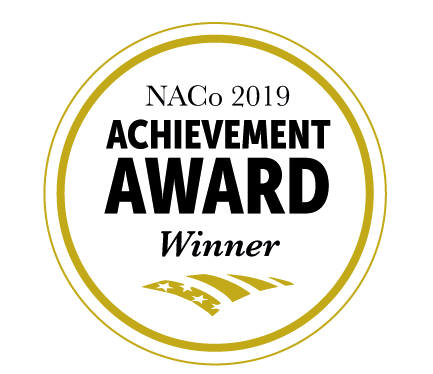
by Guest | Jun 20, 2019 | Being Well
Tillamook County has been recognized with an Achievement Award from the National Association of Counties (NACo). The awards honor innovative, effective county government programs that strengthen services for residents.
NACo recognized Tillamook County for its efforts to improve community health and quality of life through the work of Tillamook County Wellness. More than 40 organizations are working collaboratively to shape the places residents live, work, play, learn and age to help make the healthier choices the easier choices.
According to county commissioner, Bill Baertlein, “This award exemplifies the level of on-going commitment our community partners have for investing in the health and well-being of our county residents. This is quite an honor. We want to recognize the passion and hard work of our coalition partners who have helped make this happen.”
NACo President Greg Cox said, “Counties implement innovative programs that enhance residents’ quality of life every day. This year’s Achievement Award-winning programs demonstrate how counties build healthy, safe and vibrant communities across America.”
Nationally, awards are given in 18 different categories that reflect the vast, comprehensive services counties provide. The categories include children and youth, criminal justice, county administration, information technology, health, civic engagement and many more.
NACo will recognize award-winning counties at its 2019 Annual Conference and Exposition July 12-15 in Clark County, Nevada.
Started in 1970, NACo’s annual Achievement Awards program is designed to recognize county government innovations. Each nominee is judged on its own merits and not against other applications received.
For information about Tillamook County Wellness and how you can get involved, contact tillamookcountywellness@gmail.com. Visit our website, www.tillamookcountyhealthmatters.org and follow Tillamook County Wellness on Facebook, Twitter and Instagram.
The National Association of Counties (NACo) unites America’s 3,069 county governments. Founded in 1935, NACo brings county officials together to advocate with a collective voice on national policy, exchange ideas and build new leadership skills, pursue transformational county solutions, enrich the public’s understanding of county government and exercise exemplary leadership in public service. Learn more at www.naco.org
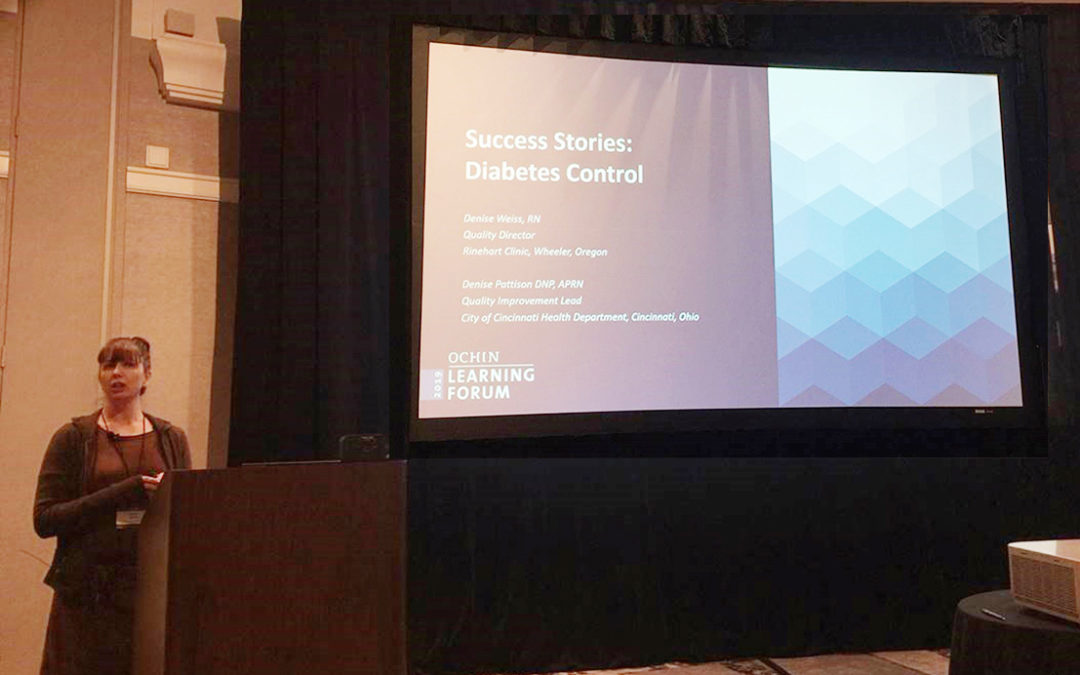
by Guest | Jun 6, 2019 | Being Well
Rinehart Clinic’s Quality Director, Denise Weiss, presented the clinic’s “Success Stories: Diabetes Control” at a recent OCHIN Learning Forum attended by healthcare centers from across the region. (OCHIN is an electronic health record program.)
Tillamook County Wellness partners are teaming up to help people more readily access the things they need to make healthy behavior changes, because cost and convenience are often the leading barriers to developing better habits. Wellness committees are working to improve community walkability and outdoor recreation access; exploring innovative ways to ensure people have access to healthy foods like fresh produce, no matter where they live. There are community surveys and interviews being conducted about how we are screening for chronic diseases, and how to better connect patients with a network of care to lower that risk.
The Rinehart Clinic in Wheeler has been providing this level of support to their patients with much success. They recently shared their story at a regional forum so other communities can learn from their example.
Rinehart Clinic’s Diabetes Success Stories featured at Learning Forum
Rinehart Clinic’s Quality Director, Denise Weiss, recently presented “Success Stories: Diabetes Control” at a Learning Forum in Portland, sharing the clinic’s strategies for helping patients with type 2 diabetes manage the disease.
According to Denise, “One of the key factors of our patients’ success is their participation in the clinic’s healthy eating and lifestyle classes in between regular visits with their doctor. To make it easy as possible for our patients to make positive changes in their health, we offer encouragement in the form of farm-fresh veggies, vouchers for healthy foods at a local grocery store or farmers market, and free physical activity passes to help them on their journey.”
The behind-the-scenes work by Rinehart Clinic’s Panel Coordinator is also a critical part of the program. The Panel Coordinator tracks how our patients are doing, patient-by-patient and diagnosis-by-diagnosis. When it’s time for a check-up or screening to see how the patient is doing, she notes that in the chart so the care team can coordinate with the patient. Having a staff member dedicated to coordinating this tracking and working with the team on follow-up is an important part of what’s working well at Rinehart Clinic. Last year, Rinehart Clinic was recognized for being the top performing clinic for diabetes control within the Columbia Pacific Coordinated Care Organization member clinics.
Many of the lifestyle habits that reduce risk for type 2 diabetes can also help people better manage the condition. Making and sticking with healthy behavior change is difficult for most people, especially without any follow-up or encouragement. When advising a patient how to lose weight, improve blood sugar levels, or lower their blood pressure, health care providers often recommend adopting healthier eating patterns and becoming more physically active. Research has shown these types of changes can significantly improve health and prevent chronic diseases, such as type 2 diabetes, heart disease and many forms of cancer.
Changing how we eat and move requires developing new habits and routines which can be overwhelming, expensive or simply inconvenient. Having a support team such as the one at Rinehart Clinic can help, but there is a lot more to the process. Healthy food options need to be available and affordable. If someone lives a long way from a store, they need reliable transportation. Similarly, living in an apartment on a busy street does not allow for a convenient or safe space to exercise and having access to a gym costs money.
Tillamook County Wellness partners are working to remove these barriers and provide support programs to reduce the risk for Type 2 diabetes. To find out more about the Rinehart Clinic diabetes program, the Diabetes Prevention Program available through the YMCA or other resources, go to www.tillamookcountyhealthmatters.org or like the Tillamook County Wellness Facebook page.
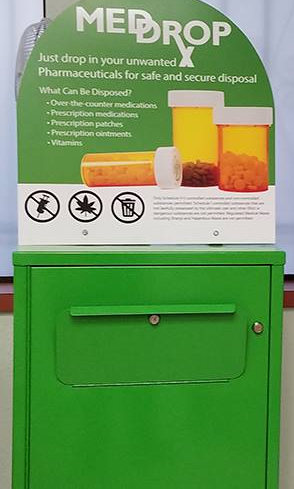
by Guest | Apr 25, 2019 | Being Well
Protect our Community. Protect our Children. Protect Our Water. Protect Our Environment.
Old prescriptions? Leftover pills? Too often these extra pills end up in the wrong hands and the wrong places. Keep everyone safe. There are convenient, safe medication “drop box” and drop off locations in Tillamook County at: Rinehart Clinic & Pharmacy in Wheeler, Rockaway Beach Police department, Tillamook City Police and Tillamook County Sheriff’s Office during the open hours.
Flushing or dumping prescription medication down a drain is not a good way to dispose of your meds. Since Tillamook is “the land of many waters” even small amounts of medication can enter the environment, contaminate drinking water, and affect people and wildlife. Help protect Oregon’s most precious resources by taking your meds back to secure collection boxes.
Find the collection box nearest you at www.takemedsseriouslyoregon.org/disposal/disposal
Protect our drinking water
Pharmaceutical residues can affect people. Traces of medication have been detected in the drinking water of 24 major metropolitan areas across the country serving 46 million people.
Protect our lakes and rivers
Another study showed that 80 percent of the sampled streams in the U.S. contain small amounts of prescription and over the counter medicines, personal care products, and other chemicals. Sewage treatment systems cannot remove all medications from water that are released into lakes, rivers or oceans. As a result, fish and other aquatic life have shown adverse effects from medicines in the water. And small amounts of medicine have been found in our drinking water from these sources.
Sources
The Associated Press. (2018). Pharmaceuticals found in drinking water.
United States Geological Survey. (2018). Wastewater contaminants in U.S. streams.
# # #

 joins the more than 10,00 locally run community health centers across the nation in celebrating this week to raise awareness about the missions, accomplishments and ways health centers are providing affordable health care.
joins the more than 10,00 locally run community health centers across the nation in celebrating this week to raise awareness about the missions, accomplishments and ways health centers are providing affordable health care. from local providers at an affordable cost, and offer expanded care through their in-house registered dietitian and behavioral health providers. TCCHC also provides public health services that include the supplemental nutrition program for Women, Infants, and Children (WIC), home visits, tobacco prevention and education, and restaurant, food and water inspections.
from local providers at an affordable cost, and offer expanded care through their in-house registered dietitian and behavioral health providers. TCCHC also provides public health services that include the supplemental nutrition program for Women, Infants, and Children (WIC), home visits, tobacco prevention and education, and restaurant, food and water inspections. TCCHC is proud to announce the arrival of the new mobile community health center. This mobile clinic will provide expanded access for community members to dental, physical and behavioral health care. Please join us in welcoming our newest team member and celebrating National Health Center Week at the Ribbon cutting ceremony on Wednesday, August 7th, from 2 p.m. to 4 p.m. at Tillamook Bay Community College, 4301 Third Street, Tillamook.
TCCHC is proud to announce the arrival of the new mobile community health center. This mobile clinic will provide expanded access for community members to dental, physical and behavioral health care. Please join us in welcoming our newest team member and celebrating National Health Center Week at the Ribbon cutting ceremony on Wednesday, August 7th, from 2 p.m. to 4 p.m. at Tillamook Bay Community College, 4301 Third Street, Tillamook.

 SRCH funds are intended to foster collaboration, reduce health disparities and healthcare costs and improve population health outcomes. This includes optimization of community and clinic-based health screenings, program referrals and reimbursement pathways.
SRCH funds are intended to foster collaboration, reduce health disparities and healthcare costs and improve population health outcomes. This includes optimization of community and clinic-based health screenings, program referrals and reimbursement pathways.



